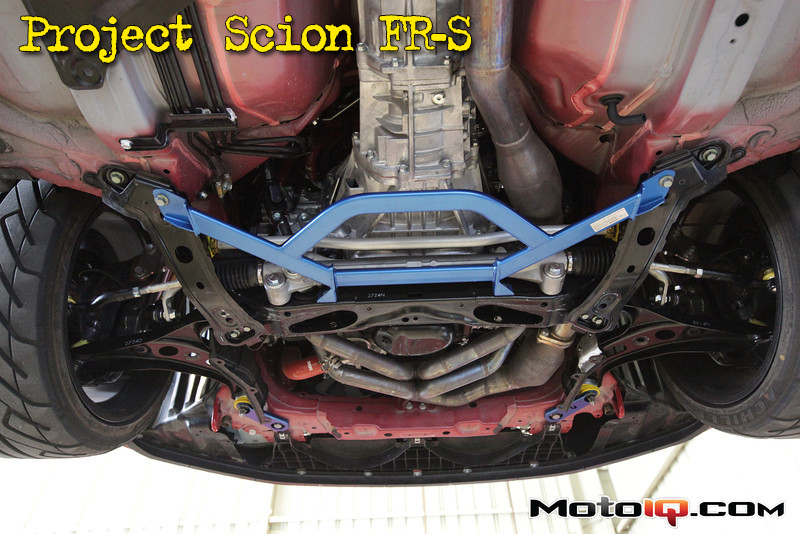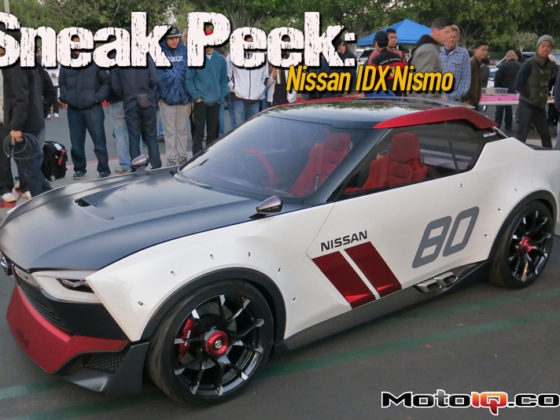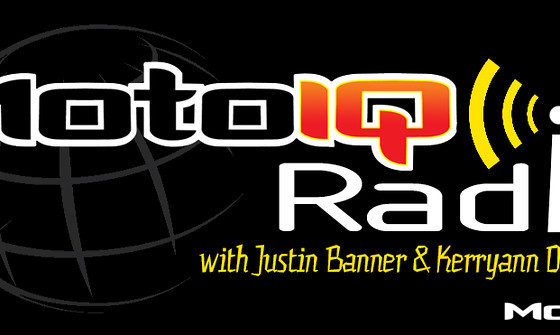
Project FR-S: Getting More Out of Our Front Suspension With Whiteline and Turn In Concepts!
The suspension on our FR-S was originally done over a year ago when we were prepping the car for the 2012 SEMA show. At the time the car was pretty new on the market and our choices were limited to a few prime items plus stuff we made work from the Subaru STI that shares some parts with the FR-S/BRZ. Since the time when we first built the car, Whiteline has come out with a bunch of parts dedicated to the FR-S/BRZ chassis that we have been eagerly awaiting.
With its wide and sticky 265/35-18 Achilles 123S tires, our FR-S was producing a lot of grip. The stick was translating into a lot of body roll and sluggish transient response even though we had added KW’s V3 coilovers and a Whiteline front anti sway bar. This was a case of tuning the car to our combo and at the time, there was little on the market available but now it’s time to upgrade to Whiteline’s full product line up and get serious.
Want more Project FR-S? MotoIQ Project Scion FR-S
 To gain more front roll stiffness we obtained Whiteline’s newest FR-S/BRZ front sway bar, the heavy duty X Blade Adjustable model. It is 22mm in diameter and features Whiteline’s newest low maintenance rod end adjustable end links for low compliance and long quiet life. The endlinks are adjustable for end to end length which is important for removing preload after the car is corner weighted. The bar has two positions for adjustment, just the thing for at the track chassis tuning. The new bar is almost 50% stiffer than our old one which has more than a 30% influence on our front end’s total amount of roll stiffness.
To gain more front roll stiffness we obtained Whiteline’s newest FR-S/BRZ front sway bar, the heavy duty X Blade Adjustable model. It is 22mm in diameter and features Whiteline’s newest low maintenance rod end adjustable end links for low compliance and long quiet life. The endlinks are adjustable for end to end length which is important for removing preload after the car is corner weighted. The bar has two positions for adjustment, just the thing for at the track chassis tuning. The new bar is almost 50% stiffer than our old one which has more than a 30% influence on our front end’s total amount of roll stiffness. We also used Whiteline’s roll center correction and bump steer reduction kit. The use of this kit is very important for a car that has been lowered as much as ours. By dropping the outer ball joint and tie rod ends with longer shanked parts, the roll center is raised without adding bump steer. This restores a close to stock roll center height on a lowered car. With a higher roll center, there is a lower roll moment to cause body roll in the first place. This is adding geometric anti roll. The suspension will resist roll independent of spring and bar rates. Putting the lower control arm in a more factory like position also helps a McPherson strut car by making the car less likely to gain positive camber under roll. This also helps front grip.
We also used Whiteline’s roll center correction and bump steer reduction kit. The use of this kit is very important for a car that has been lowered as much as ours. By dropping the outer ball joint and tie rod ends with longer shanked parts, the roll center is raised without adding bump steer. This restores a close to stock roll center height on a lowered car. With a higher roll center, there is a lower roll moment to cause body roll in the first place. This is adding geometric anti roll. The suspension will resist roll independent of spring and bar rates. Putting the lower control arm in a more factory like position also helps a McPherson strut car by making the car less likely to gain positive camber under roll. This also helps front grip. The FR-S/BRZ suffers from big squishy rubber bushings that support the steering rack. We got these solid delrin bushings from Turn In Concepts. The solid bushings will eliminate all play in our steering.
The FR-S/BRZ suffers from big squishy rubber bushings that support the steering rack. We got these solid delrin bushings from Turn In Concepts. The solid bushings will eliminate all play in our steering. Whiteline has front forward lower control arm bushings (part number KCA434) that do several things, first the obvious, they replace a big squishy rubber part with firm polyurethane. You can see that since this part must displace radially and axially due to its sideways mounting, that the bushing itself has engineered flex built into it in the right direction to prevent binding. Next the cool stuff. The bushing cants the front of the lower control arm inward pulling the wheel forward, increasing caster by over 0.5 degrees. This helps stability and turn in by giving negative camber when the wheel is turned. Lastly, it move the pivot point of the lower control arm up by around 0.3 inches which reduces anti dive. Reducing anti dive means that the front end will have more grip if you are trail braking or left foot braking. It also raises the roll center slightly and improves the camber curve slightly as well.
Whiteline has front forward lower control arm bushings (part number KCA434) that do several things, first the obvious, they replace a big squishy rubber part with firm polyurethane. You can see that since this part must displace radially and axially due to its sideways mounting, that the bushing itself has engineered flex built into it in the right direction to prevent binding. Next the cool stuff. The bushing cants the front of the lower control arm inward pulling the wheel forward, increasing caster by over 0.5 degrees. This helps stability and turn in by giving negative camber when the wheel is turned. Lastly, it move the pivot point of the lower control arm up by around 0.3 inches which reduces anti dive. Reducing anti dive means that the front end will have more grip if you are trail braking or left foot braking. It also raises the roll center slightly and improves the camber curve slightly as well.



2 comments
Mike,
Appreciate all your suspension articles on motoiq.
If I understand correctly the stock alignment spec is:
Camber: 0, Caster: 5°54′, Steering Axis Inclination: 15°31′ , Toe: 0mm
and the modified is:
Camber: 3.5 deg neg, Caster: 8°, Steering Axis Inclination: 11° , Toe: 3mm toe out
The camber, castor and toe all seem pretty conventional (and good) mods for getting good turn in, good mid corner front end grip and a car that is responsive to the wheel without getting to spookiness and instability. I am intrigued, and have to admit my ability to think about the geometry without a model is at its limit.
Is the effort of reducing the steering axis inclination about minimising scrub radius? Or is it something more.
In short, could you explain a little more what your aims and ideas are around “We prefer to run minimal scrub and lead the caster with king pin angle by a few degrees.”?
Tuning JDM and British cars I never found an extra degree of castor I didn’t like, but can admit to never being up for exploring KPI. Though with an adjustable strut top and camber pins on a mcpherson strut its very very doable.
Thanks!
David
Actually reducing KPI increases scrub but it also makes for more wheel tilt in the wrong direction that is countered by the caster.